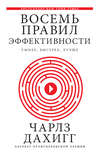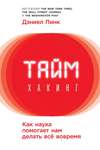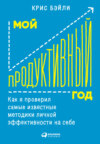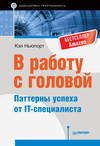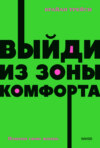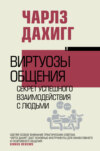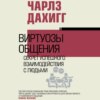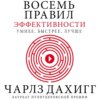«Власть привычки. Почему мы живем и работаем именно так, а не иначе» kitabından alıntılar, sayfa 6

It's easier to convince someone to adopt a new behavior if there is something familiar at the beginning and end.
Rather, to change a habit, you must keep the old cue, and deliver the old reward, but insert a new routine.
That’s the rule: If you use the same cue, and provide the same reward, you can shift the routine and change the habit. Almost any behavior can be transformed if the cue and reward stay the same.

Claude Hopkins wasn’t selling beautiful teeth. He was selling a sensation. Once people craved that cool tingling—once they equated it with cleanliness—brushing became a habit.
…
“Consumers need some kind of signal that a product is working. We can make toothpaste taste like anything—blueberries, green tea—and as long as it has a cool tingle, people feel like their mouth is clean. The tingling doesn’t make the toothpaste work any better. It just convinces people it’s doing the job.”
Anyone can use this basic formula to create habits of her or his own. Want to exercise more? Choose a cue, such as going to the gym as soon as you wake up, and a reward, such as a smoothie after each workout. Then think about that smoothie, or about the endorphin rush you’ll feel. Allow yourself to anticipate the reward. Eventually, that craving will make it easier to push through the gym doors every day.

When researchers at the University of North Texas and Yale tried to understand why families gradually increased their fast food consumption, they found a series of cues and rewards that most customers never knew were influencing their behaviors. They discovered the habit loop.
Every McDonald’s, for instance, looks the same—the company deliberately tries to standardize stores’ architecture and what employees say to customers, so everything is a consistent cue to trigger eating routines. The foods at some chains are specifically engineered to deliver immediate rewards—the fries, for instance, are designed to begin disintegrating the moment they hit your tongue, in order to deliver a hit of salt and grease as fast as possible, causing your pleasure centers to light up and your brain to lock in the pattern. All the better for tightening the habit loop.
However, even these habits are delicate. When a fast food restaurant closes down, the families that previously ate there will often start having dinner at home, rather than seek out an alternative location. Even small shifts can end the pattern. But since we often don’t recognize these habit loops as they grow, we are blind to our ability to control them. By learning to observe the cues and rewards, though, we can change the routines.

Habits aren’t destiny. Habits can be ignored, changed, or replaced. But the reason the discovery of the habit loop is so important is that it reveals a basic truth: When a habit emerges, the brain stops fully participating in decision making. It stops working so hard, or diverts focus to other tasks. So unless you deliberately fight a habit—unless you find new routines—the pattern will unfold automatically.

Over time, this loop—cue, routine, reward; cue, routine, reward—becomes more and more automatic. The cue and reward become intertwined until a powerful sense of anticipation and craving emerges.

The basal ganglia was central to recalling patterns and acting on them. The basal ganglia, in other words, stored habits even while the rest of the brain went to sleep.

Когда людей просят сделать что-то, требующее самоконтроля, они утомляются значительно меньше, если чувствуют, что это их собственный выбор или нечто приятное и полезное для окружающих. Если же им кажется, что за них решают, а им остается только выполнять приказы, их мускул воли устает значительно быстрее.

Некоторые мыслители, - писал Аристотель в «Никомаховой этике», - утверждают, что люди от природы становятся хорошими. Другие считают, что это происходит по привычке, третьи - по указанию». Аристотель считал, что всем правят привычки. Он полагал, что действия, которые совершаются бездумно, доказывают истинную человеческую сущность. Поэтому «как нужно заранее готовить клочок земли, прежде чем он сможет питать семя, так следует готовить и ум ученика и его привычки, чтобы он любил и ненавидел правильное.

Вся наша жизнь, - писал Уильям Джеймс, - в своей отчетливой форме есть не что иное, как масса привычек - практических, эмоциональных и интеллектуальных, которые систематически организуются ради нашего счастья или страдания и непреодолимо несут нас к нашей судьбе, какой бы она ни была.

Так, после Второй мировой войны конгресс принял программу строительства общественных больниц. Четверть века спустя она все еще поддерживалась: каждый раз, когда законодатели выделяли новые средства на здравоохранение, чиновники немедленно начинали возводить больницы. В городах, где строили новые больницы, не всегда требовались дополнительные койко-места, но это было не важно. Куда важнее было возвести большое здание, на которое мог сослаться политик во время предвыборной кампании. Как рассказывал мне О’Нил, правительственные работники «месяцами спорили о цвете занавесок, выясняли, один или два телевизора ставить в палатах, проектировали пост медсестры и занимались прочей ерундой». «Чаще всего никто даже не спрашивал, нужна ли этому городу еще одна больница. Чиновники привыкли решать все медицинские проблемы с помощью строительства, чтобы конгрессмен мог потом сказать: „Это сделал я!“ В этом не было ни малейшего смысла, однако раз за разом все делали то же самое».


